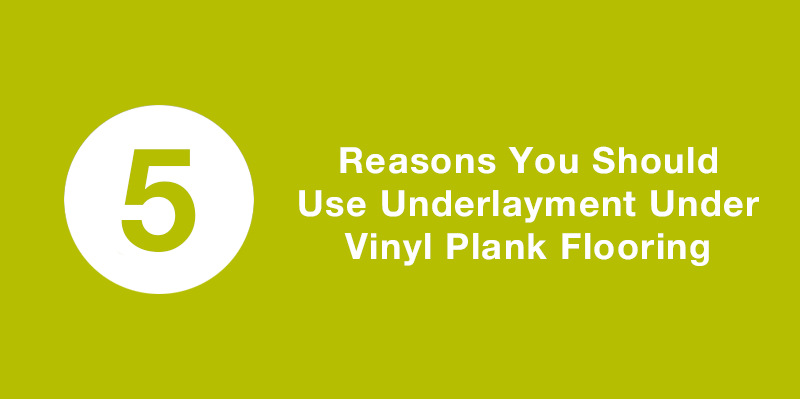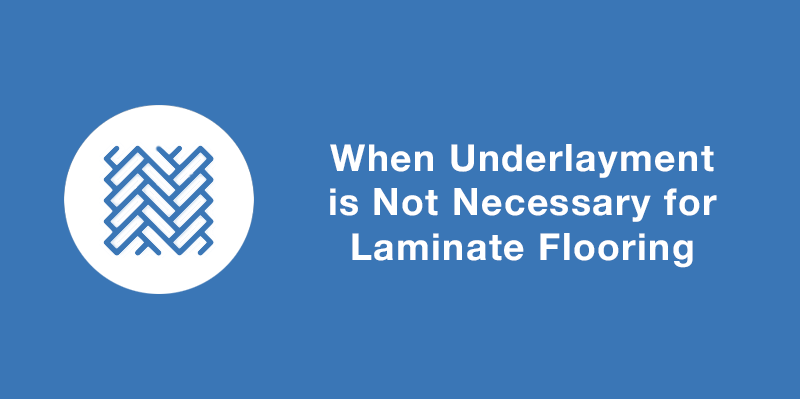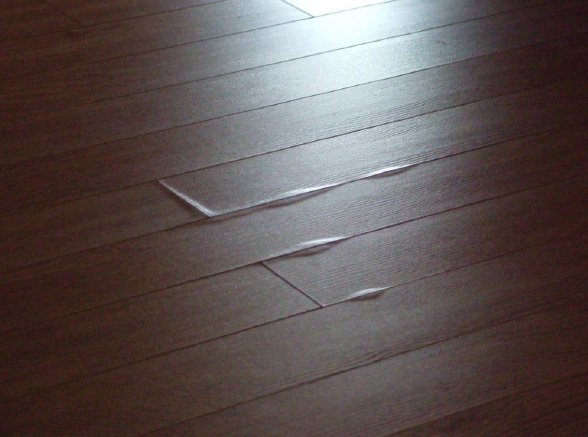Whether you’re a regular maestro with all things reno, you’ve spontaneously thrown yourself into household projects during the pandemic, or you’re completely clueless even with clear plans in place, everyone loves home improvement. There’s little better than the satisfaction of seeing your beloved home become something better than what it was yesterday and changing out the floors are often a huge step along this path. But if you’re considering installing vinyl plank flooring for the first time, you’ve probably got a lot of questions. Perhaps one of the biggest, though, is if you should bother with underlayment or forego it altogether. Our answer is you should absolutely use it and here are five reasons why we recommend it.
1. Compensates for Imperfect Subfloors
As much as we would all love it if subfloors were always smooth and perfect, that isn’t how it usually happens. Even floors that are in fairly good condition can have some flaws to them. Minor imperfections, slight unevenness, tiny indentations, and the like are a fairly common occurrence – which is bad news for those of us committed to certain flooring options. You truly need your subfloors next to spotless for something like vinyl plank.
Does that mean you’re out of luck if they’re not? Thanks to underlayment – no! Placing this type of padding can essentially cover up all those dips and nicks, giving you a blank canvas that’ll be ideal for your flooring project. Just keep in mind that this is to make up for minor problems, not significant ones. Serious divots and clear damage can’t be smoothed over by merely adding in underlayment. In these situations, you’ll definitely need it all corrected by a knowledgeable contractor before any new flooring can happen.
2. Allows for Better Underfoot Comfort
Do you love the look of hard flooring but have super sensitive feet? You’re not alone on that front. There’s a reason carpet was so thoroughly popular in recent decades despite being less hygienic and (oftentimes) harder to care for. It’s far kinder to the feet, cozier, and more comfortable for our already overworked soles. But let’s admit it. Carpet just doesn’t look as good as some of the higher-end luxury vinyl options hanging around today. That’s where underlayment comes into play.
This stuff provides some much-needed padding where you need it, turning your unyielding floors into something with at least a touch more give to it. It’s not overtly noticeable as you’re going about your business, but you’ll see a big difference at the end of the day. Your feet will thank you, less tender and pained, even if you’ve been up cooking, cleaning, and doing dishes all day. It also provides enough cushioning that your knees won’t scream out every time you get on the floor to play with your kids. So, parents out there, definitely take notice.
3. Provides a Great Moisture Barrier
We love that underlayment is comfier an all-around comfier choice and can help make your vinyl dreams come true despite minor subfloor issues. However, there aren’t the only reasons we recommend it for practically everyone we come across. Another primary reason behind our infatuation is that it’s a fantastic way to up your floor’s moisture resistance.
Using underlayment means that your subfloors aren’t immediately exposed below your vinyl plank flooring. There’s a barrier there then, small but present. This then acts as a secondary line of defense against anything wet that might seep through your flooring, safeguarding your subfloors from any possible structural damage. On top of this, it aids in keeping potential mold and mildew at bay, discouraging it from growing below your floors where you probably won’t even notice it. That means underlayment doesn’t only secure better health for your home, but for you, too. A win-win if you ask us.
4. Guarantees Some Level of Sound Reduction
It’s no secret (or surprise) that hard flooring tends to be pretty noisy when you walk all over it. Unlike with carpet, there’s simply nothing there to muffle the sound and ensure the noise of daily life and pitter-patter of little feet stays to a minimum. That’s not necessarily a bad thing. Not everyone cares if every step rings out clear, but if you happen to have a lot of foot traffic or particularly active kids, cats, or dogs, you’ll likely find yourself caring a great deal more. Things can get loud fast, especially should your walls also be on the thinner side.
Luckily, opting for underlayment can help deaden a large amount of the sound, absorbing some of the noise much like carpet would. That way, you get some of the benefits of soft flooring without all the downsides. It’s a particularly great move for multigeneration households or those who live in a condo or apartment since it allows you to move around more without disturbing anybody nearby.
5. Blocks Out Some of the Cold
For the majority of the country, cold weather is a non-negotiable, at least for a few months of the year. It’s merely one of the tradeoffs you get for having four full seasons. Unfortunately, that’s not always very fun to deal with. It’ll leave your heating bill sky high in a heartbeat, all while not even sparing your feet from the frigid chill. And in return, you’ll be forced to dole out extra cash every month and wear your slippers around 24/7 just to avoid freezing your poor extremities. To call it rude would be an understatement. Tired of it? Underlayment can at least assist with the latter half of this problem. Adding this form of padding beneath your vinyl plank once again provides an extra layer of protection between you and the outside, acting as insulation. All that cold air swirling around out there beyond your door is then kept exactly where it belongs and the warm from your heater is kept safely inside. The result is a room that generally feels more temperate and a floor that doesn’t feel like it’ll give you frostbite anytime soon. What’s not to like about that?
Join Our Newsletter
You are about to install your new flooring. As you lay the first plank you realize that



